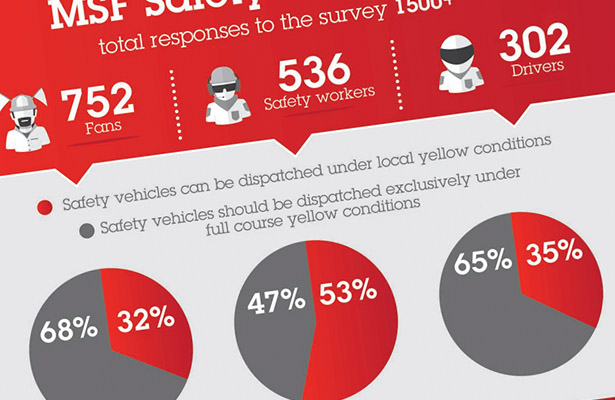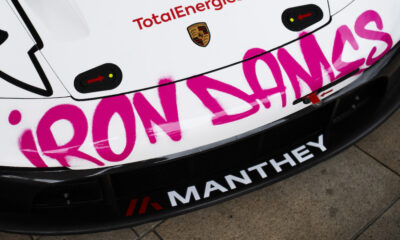
Image: Motorsport Safety Foundation
The Motorsport Safety Foundation has released the results of its survey on safety cars, which polled more than 1,500 total fans, safety workers and drivers on various methods of safety car deployment and full-course cautions.
The anonymous survey from the non-profit organization came in response to a number of recent incidents involving safety vehicles on track, including one that left a track worker with serious injuries after being hit by a race car.
“The recent incidents that occurred got us thinking,” Motorsport Safety Foundation COO Scot Elkins told Sportscar365.
“The primary mission is to act as a community and try to bring thoughts on improving motorsports safety together. That’s what brought about the survey.
“There’s been a lot of conversations about how long yellows are, when safety cars are deployed and things like that, so we thought it would be interesting to ask fans, drivers and safety workers to look at it and get a picture of what the right thing is.”
The results were divided between fans, safety workers and drivers, particularly over the debate of whether safety vehicles should be dispatched under local yellow conditions.
Sixty-eight percent of polled fans said safety vehicles should be dispatched only under full-course yellow conditions, while only 47 percent of safety workers agreed.
Elkins, who previously worked in the competition department at IMSA, was surprised with the results.
“The background that I have in working with sanctioning bodies, it’s always a very clear statement that the sanctioning body makes to all of the workers that no one is to go out unless instructed to do so,” he said.
“I think it’s interesting that the workers, and it’s not a majority, but they seem to have an opinion that they should be doing work that typically the sanctioning bodies don’t want them to do.”
The majority of fans, drivers and safety workers, however, all agreed that a race should end under full-course caution, rather than a local yellow, if a stranded car is in a compromised position with less than five laps to go.
Meanwhile, 76 percent of polled fans are in favor of adopting a virtual safety car, with the majority of safety workers and drivers also in agreement.
Elkins said the primary goal of the survey was to simply gather information and to begin some discussion points within the industry.
“As a non-profit foundation, we try to play an independent role,” he said. “We’re not trying to stir anything up but instead just gathering information and trying to get a feel for what the pulse is.
“I’ll reach out to some of my friends at some of the other sanctioning bodies to let them know what we found in our survey. Being able to share this information in the media just gets people thinking about it. That’s the biggest goal we can have.
“You typically don’t think of change unless something happens. Ideally what we’re doing in terms of making people think about it a little more, it may direct some change going forward.”
The full results from the survey can be found here.























